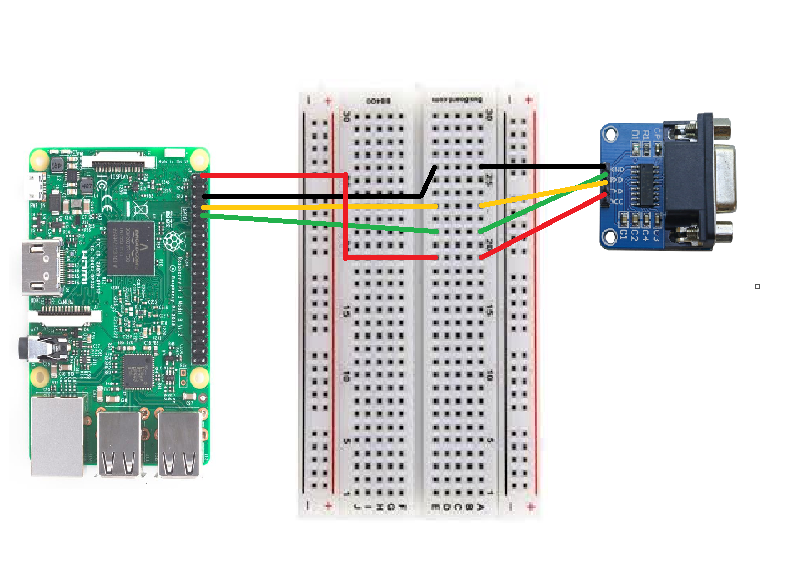
- RASPBERRY PI USB SERIAL PORT PYTHON HOW TO
- RASPBERRY PI USB SERIAL PORT PYTHON SOFTWARE LICENSE
- RASPBERRY PI USB SERIAL PORT PYTHON INSTALL
- RASPBERRY PI USB SERIAL PORT PYTHON UPDATE
It is getting the right answer from the device and printing it. In order to test the program I ran it on my windows 7 computer running Python 3.2 changing the port to the right COM. Raspberry Pi is not receiving anything, just timeout. I am running the following python program (I am running Python 3.2): import serialĭata=bytes() I am using a USB cable connected to a null cable like this one. It should reply after receiving the message that I am sending. This article explained the three options for an connecting a Raspberry Pi with a Raspberry Pico using (Micro)Python. I have used the device many times and I know how the protocol works. Insert the adapter on of your Picos USB ports.
RASPBERRY PI USB SERIAL PORT PYTHON INSTALL
Using Python First, you have to install the basic packages to read serial port piraspberrypi sudo apt-get install python-serial In my case I am using FTDI wireless USB device, connected to the port /dev/ttyUSB0.
RASPBERRY PI USB SERIAL PORT PYTHON HOW TO
Now you are ready to code.I am trying to connect the Raspberry Pi to a microcontroller using the USB Port. Here I'm going to show how to read the USB (serial port) using Linux on a Raspberri Pi.

RASPBERRY PI USB SERIAL PORT PYTHON UPDATE
Then you need to update your local varibles: CLASSPATH and LD_LIBRARY_PATH, for example as ~ $ export ~ $ export LD_LIBRARY_PATH=$LD_LIBRARY_PATH:/usr/lib/jni If we want to do the same using Java, we need to install first the RXTX library (and of course Java ~ $ sudo apt-get install librxtx-java Now you can include your code to detect different telegrams or patterns, por example using: This is a very basic code that read data from /dev/ttyUSB0 and print it hexadecimal pair format. # configure the serial connections (the parameters differs on the device you are connecting to) In my case the parameters to fetch the device are: 9600 8N1. Once we know that the device is connected and has beed detected we can start coding. You can get more information about your USB devices as ~ $ lsusbīus 001 Device 002: ID 0424:9514 Standard Microsystems Corp.īus 001 Device 001: ID 1d6b:0002 Linux Foundation 2.0 root hubīus 001 Device 003: ID 0424:ec00 Standard Microsystems Corp.īus 001 Device 004: ID 0403:6001 Future Technology Devices International, Ltd FT232 USB-Serial The loaded modules for my devices are shown with the ~ $ lsmod usb 1-1.2: FTDI USB Serial Device converter now attached to ttyUSB0 ftdi_sio 1-1.2:1.0: FTDI USB Serial Device converter detected usbserial: USB Serial support registered for FTDI USB Serial Device bcm2708-i2s bcm2708-i2s.0: Failed to create debugfs directory

usbcore: registered new interface driver ftdi_sio The module encapsulates access to the serial port, including access over various interfaces (such as TTL ports, RS232, RS485, and RFC 2217) and various URL handlers.

RASPBERRY PI USB SERIAL PORT PYTHON SOFTWARE LICENSE
It’s available under the free software license on GitHub. PySerial is the library that’s used as the Python Serial Port Extension for Linux, BSD, OSX, Win32, and even Jython and IronPython. usbserial: USB Serial support registered for generic I am running the following python program (I am running Python 3.2): import serial port serial.Serial ( '/dev/ttyUSB0', baudrate57600, parityserial.PARITYNONE, stopbitsserial.STOPBITSONE, bytesizeserial.EIGHTBITS, writeTimeout 0, timeout 10) databytes ( 0x0c,0x80,0x09,0x00,0xf0,0xce,0圆1,0x9d,0x01,0x00,0x01,0x00,0x00,0x00) print (port.isOpen ()) print ('Port opened.') port.write (data) print ('Data sent') while True: print ('inside while') responseport.read (8). Python serial library For a Python script to use Raspberry Pi’s serial port, it requires a library to interface with it. usbcore: registered new interface driver usbserial_generic usbcore: registered new interface driver usbserial You can check the state of your USB stick and the kernel modules associted to it using the ~ $ dmesg In my case I am using FTDI wireless USB device, connected to the port /dev/ttyUSB0. Here I'm going to show how to read the USB (serial port) using Linux on a Raspberri Pi.įirst, you have to install the basic packages to read serial ~ $ sudo apt-get install python-serial Recently I bought my first Raspberry Pi, and as a first project I decided to implement a wireless package filter.


 0 kommentar(er)
0 kommentar(er)
